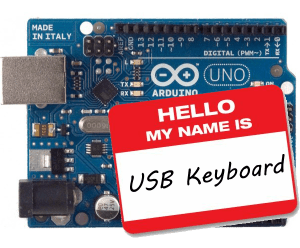
A common challenge for computer security specialists is getting data out of a very locked-down system. Of course all network traffic on these test machines is monitored, and burning a CD or writing to a USB Flash drive is out of the question. Where there’s a will there’s a way, so [András] figured out how to extract data from a computer by emulating a keyboard.
Emulating a USB HID device is nothing new; the newest Arduino can do it, as can any AVR with the help of V-USB. [András]’s build emulates a USB keyboard that can download data from a computer by listening to the NUM, CAPS and SCROLL lock LEDs.
Of course, [András] first needs an app to transmit data through these keyboard status LEDs. To do this, his build carries with it a Windows executable file on the AVR’s Flash memory. After plugging his device into the computer, it writes this program to disk and is then able to send data out through keyboard status LEDs.
It’s not very fast – just over one byte per second – but [András] did manage to extract data from a computer, circumventing just about every anti-leaking solution.












